October 22, 2021
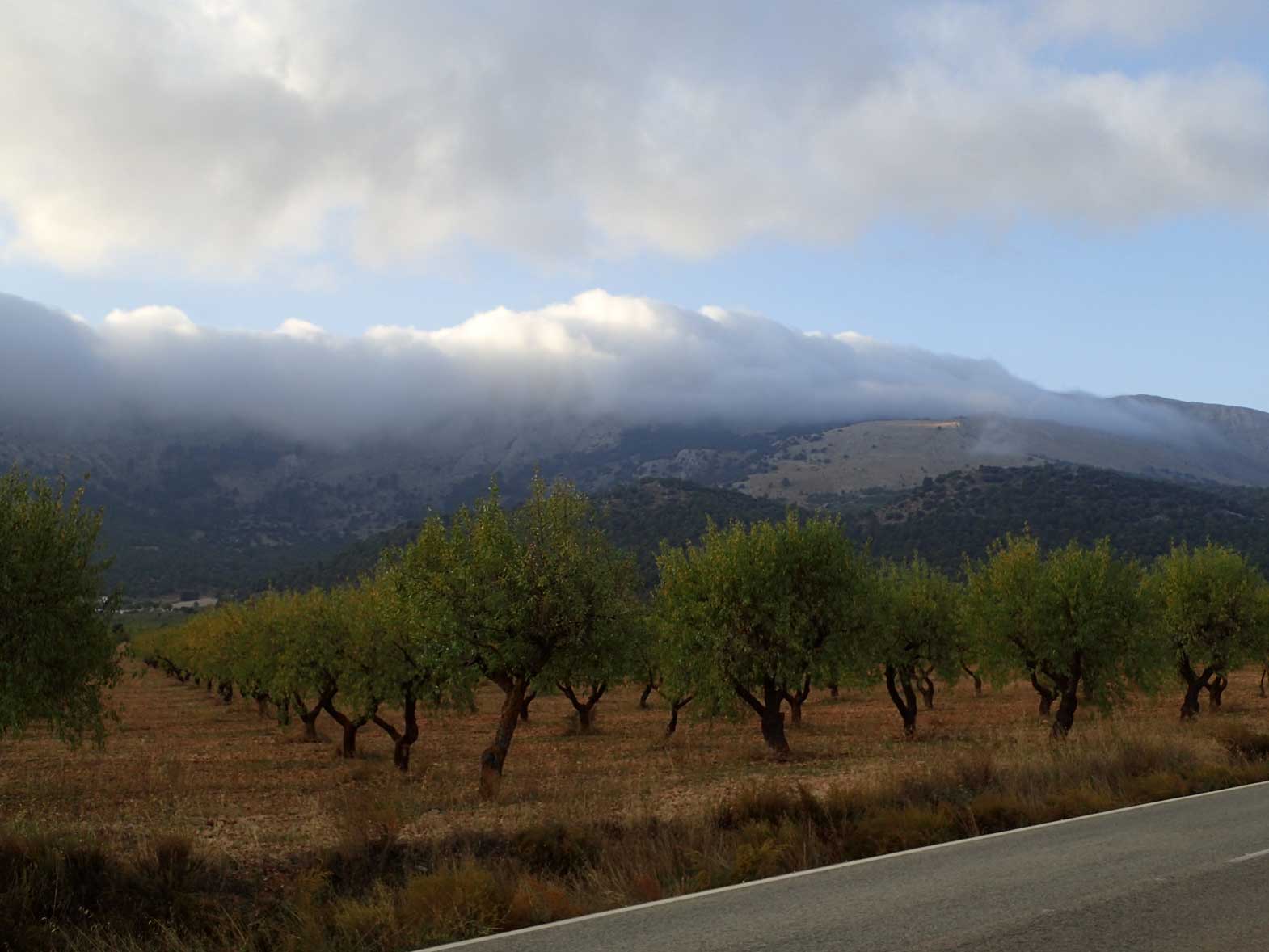
We left the beautiful town of Valez Blanco to finish the last four kilometers of the climb up the mountain we began yesterday. The weather called for a bit of rain and indeed the sky looked threatening. However, the front was coming in from the coast and that hill that was so hard to climb helped us by holding back the rain clouds until we had passed dryly into the wide valley below the sierra.

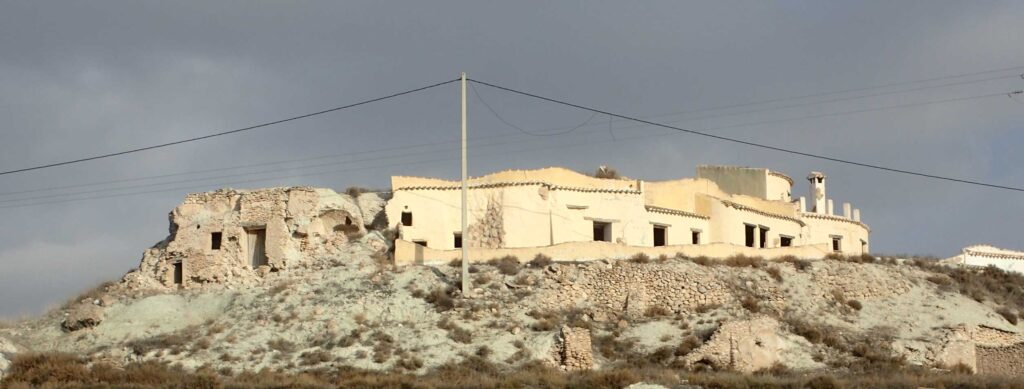 Abandoned dwellings still punctuated the landscape reminding us of the small, family run but marginal agricultural operations that have now been overtaken by agro-biz throughout this region. An entire way of life that underwent a sea-change in a matter of a few decades
Abandoned dwellings still punctuated the landscape reminding us of the small, family run but marginal agricultural operations that have now been overtaken by agro-biz throughout this region. An entire way of life that underwent a sea-change in a matter of a few decades
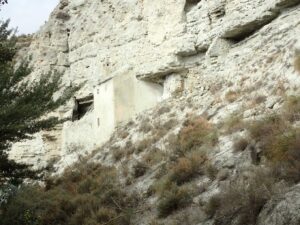

Part of journey took us through a narrow valley carved through soft limestone cliffs. Here Spanish residents in both the past and present have gone troglodyte, carving well insulated homes into the sides of the cliffs. There were many such dwellings and they reminded me of the pueblos of the American southwest. There is a tradition of this sort of dwelling in southern Spain with entire towns nestled into the hillsides especially in the southern province of Cadiz. In a few days we will pass near one such town, Setenil, as we make our way to Ronda.
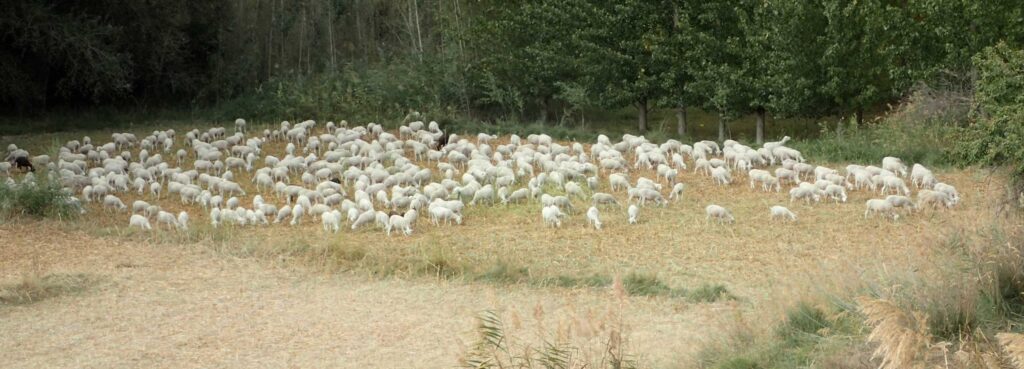
Today was what someone called a “rolling rest day” with only 85 kilometers of riding and just over 700 meters of climbing. While it was definitely easier than the previous day and far easier than tomorrow, it was hardly a day out of the saddle. Maybe after tomorrow’s grind we will reflect on it with loving fondness. It certainly was an interesting and beautiful day to be touring on a bicycle.
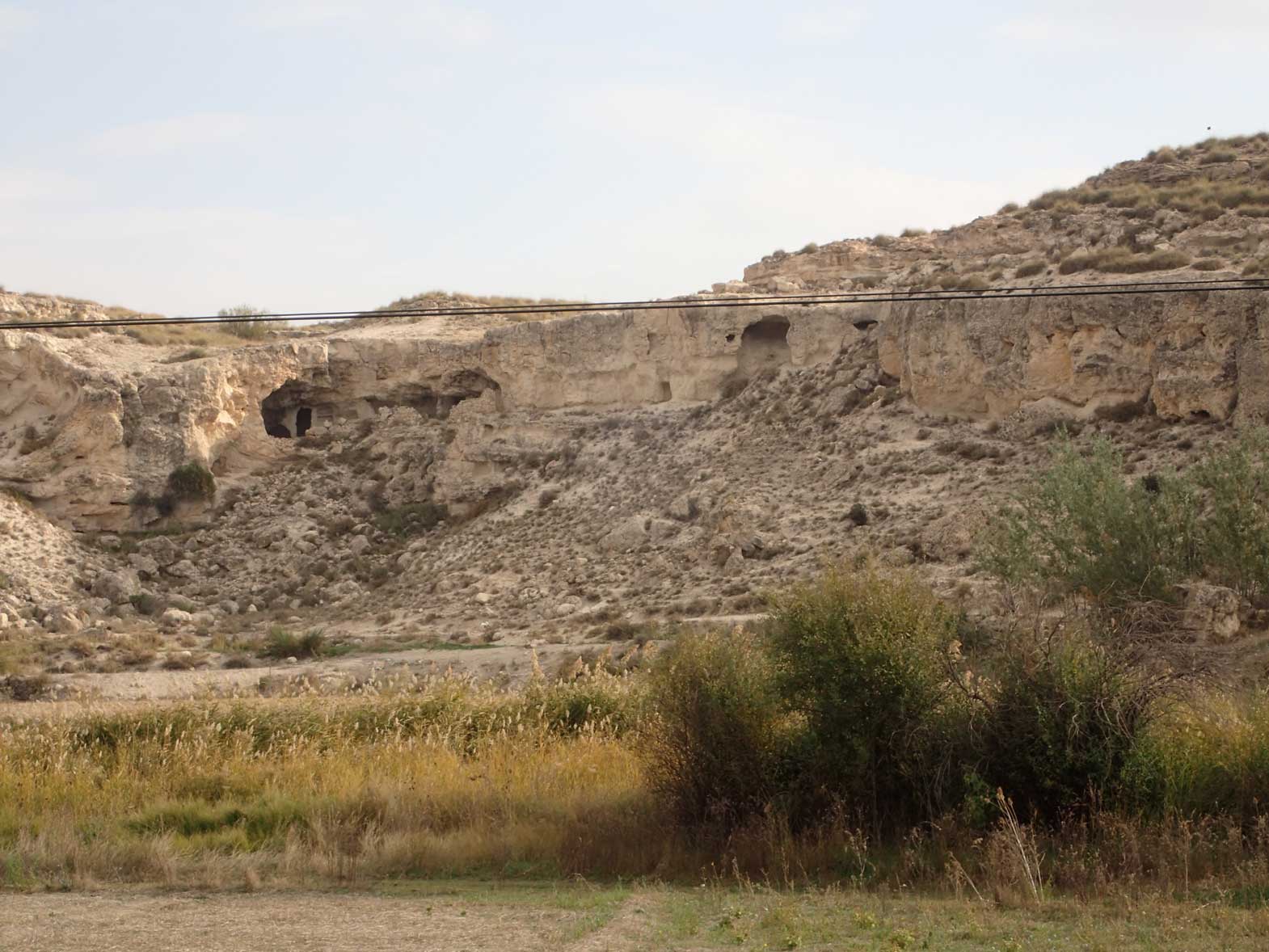


 First, my title is not a typo or an example of my poor spelling habits. We are now riding through that portion of Spain that was invaded and occupied around 700 AD by the Moors. The invasion took less than ten years to complete and the occupation was not ended until 1492. Many of the castles that we have seen were either built upon old Moorish forts or after the reclamation as a defense against another invasion. Many were built by wealthy Spaniards newly rich from the easy gold harvested from the Americas by the Conquistadors.
First, my title is not a typo or an example of my poor spelling habits. We are now riding through that portion of Spain that was invaded and occupied around 700 AD by the Moors. The invasion took less than ten years to complete and the occupation was not ended until 1492. Many of the castles that we have seen were either built upon old Moorish forts or after the reclamation as a defense against another invasion. Many were built by wealthy Spaniards newly rich from the easy gold harvested from the Americas by the Conquistadors.
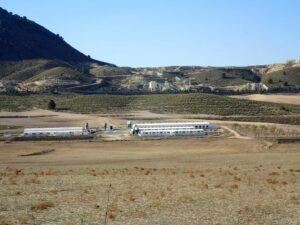
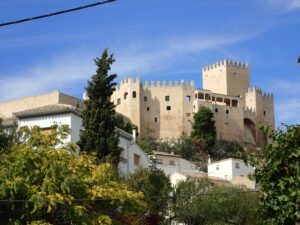

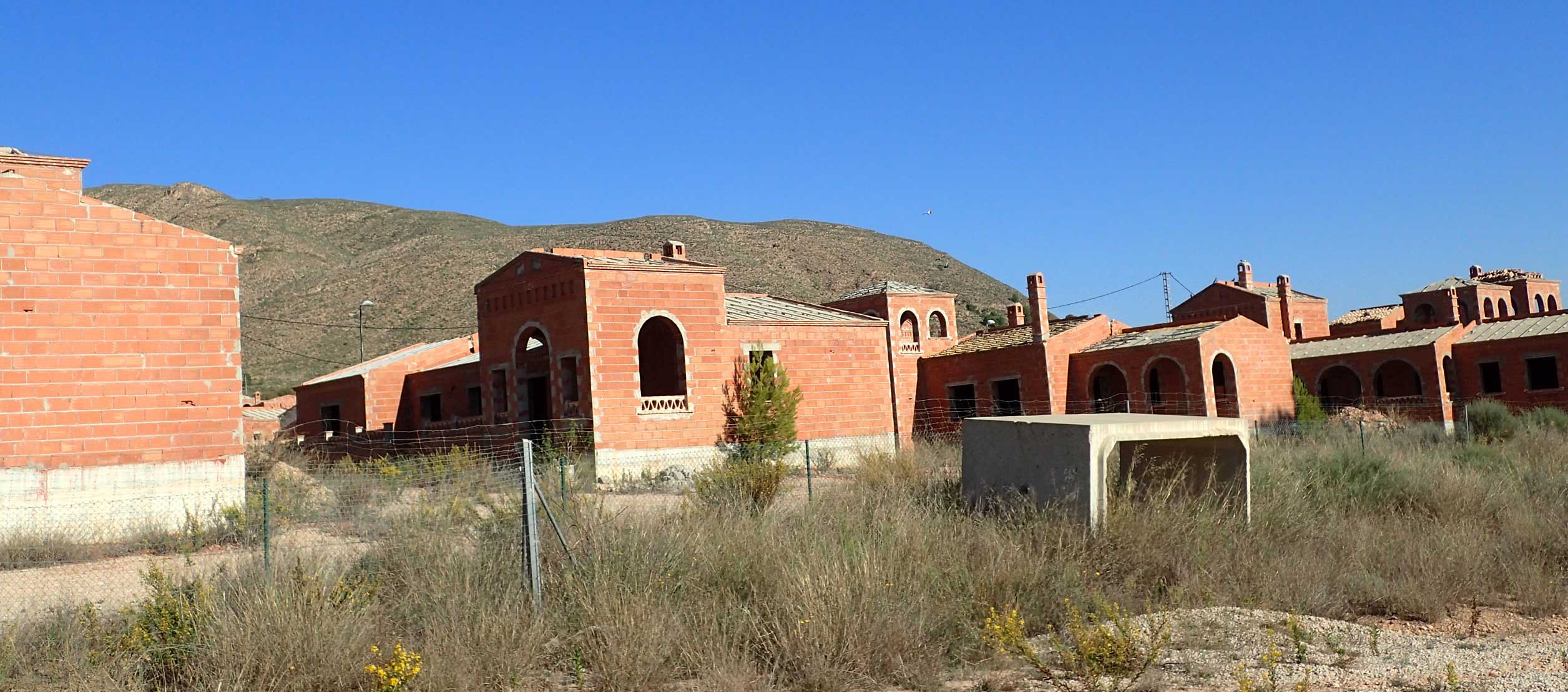
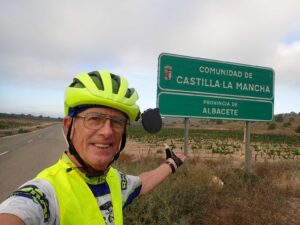
 Along the way we passed another relic, this one of the financial collapse in 2008. In that year Spain’s hot housing market collapsed as did many other around the world. Near the region of La Mancha (as in Don Quixote) is a failed development of epic proportion. The story we were told was that there was a rich mining development that was to become the center of an entire region bringing in thousands of workers and high paying jobs. An ambitious city was developed with many homes and buildings fully completed and many more in various stages of construction just when the boom went bust. What remains is a ghost city of epic size that could be yours for the right price. I have posted a photo of the contact information if you are interested.
Along the way we passed another relic, this one of the financial collapse in 2008. In that year Spain’s hot housing market collapsed as did many other around the world. Near the region of La Mancha (as in Don Quixote) is a failed development of epic proportion. The story we were told was that there was a rich mining development that was to become the center of an entire region bringing in thousands of workers and high paying jobs. An ambitious city was developed with many homes and buildings fully completed and many more in various stages of construction just when the boom went bust. What remains is a ghost city of epic size that could be yours for the right price. I have posted a photo of the contact information if you are interested.
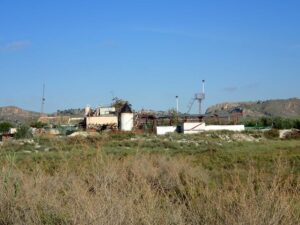 There are also plenty of other abandoned opportunities nearby su
There are also plenty of other abandoned opportunities nearby su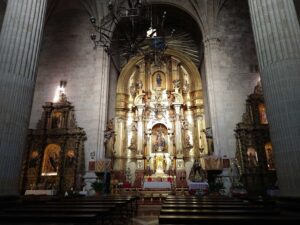
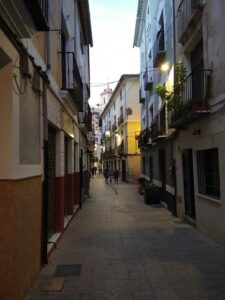

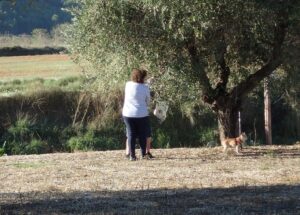

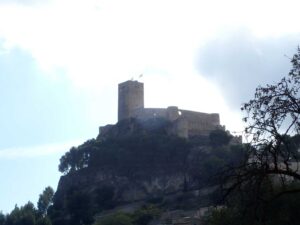



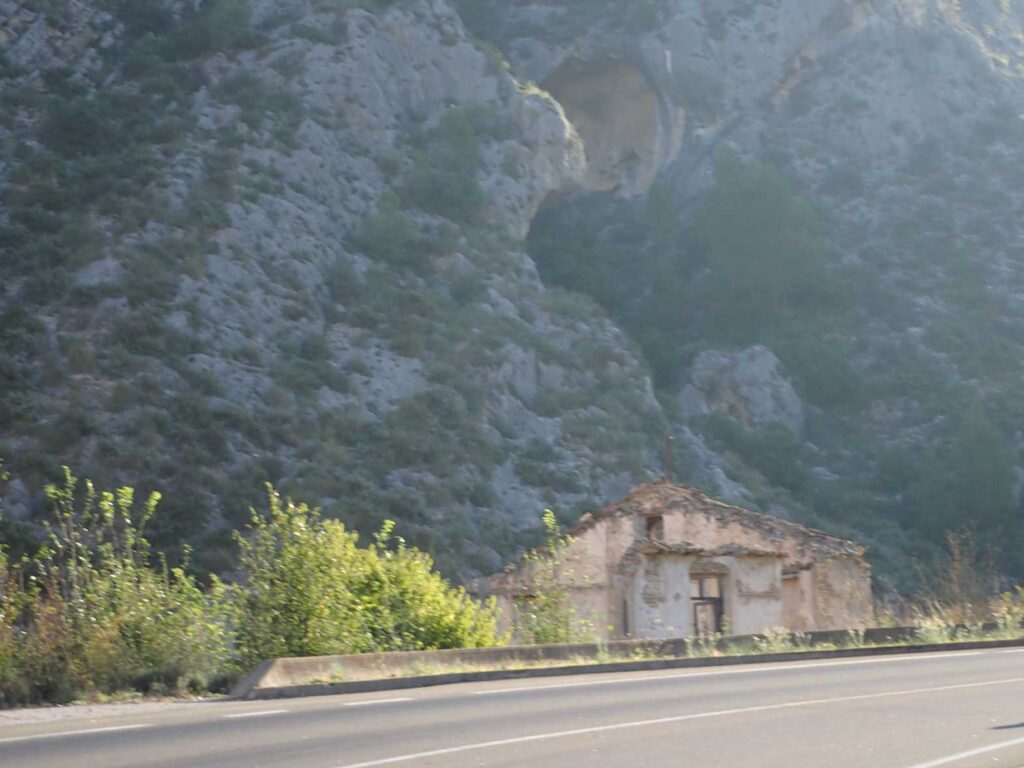



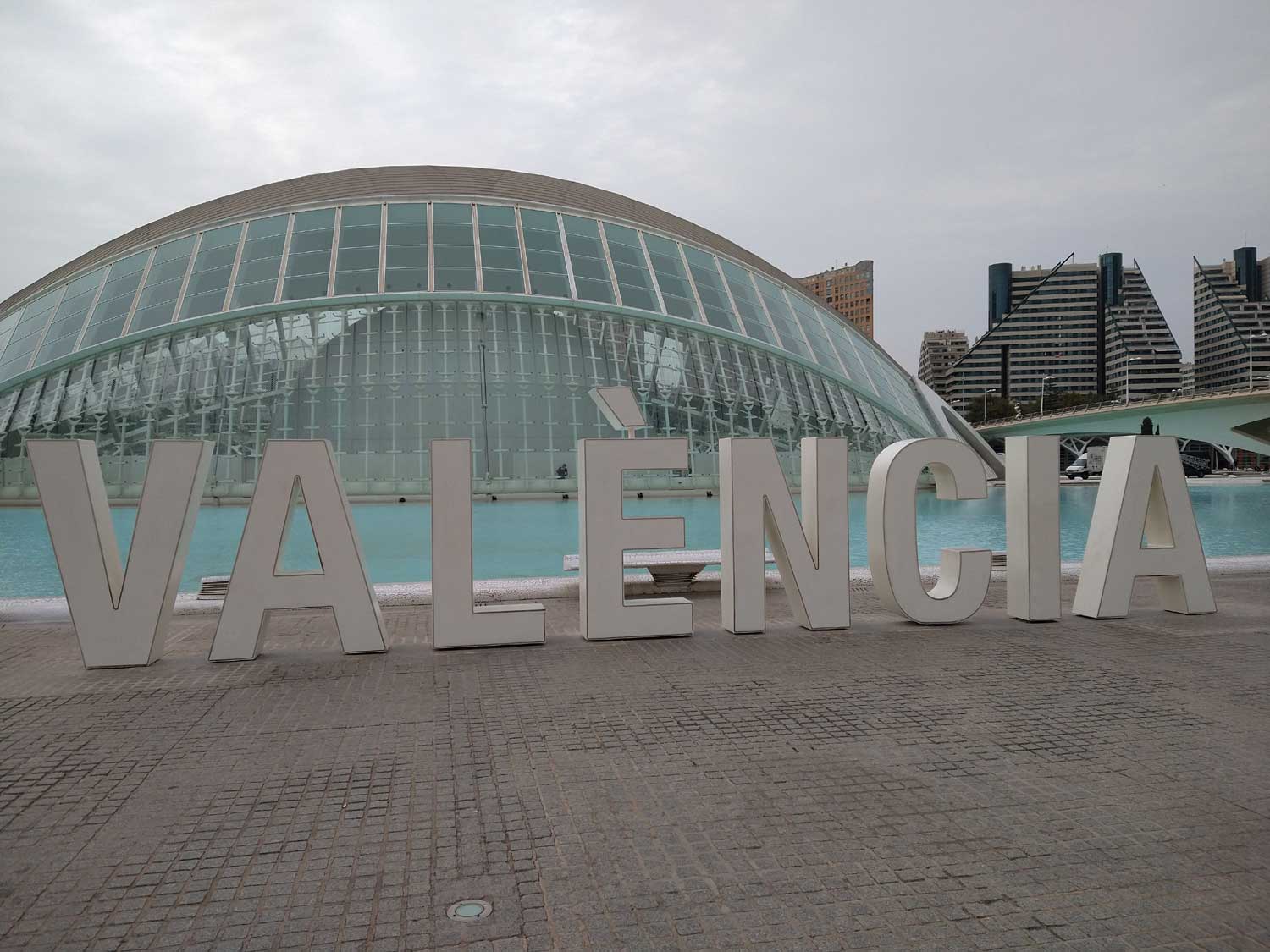

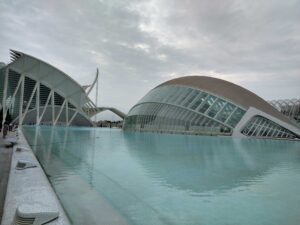
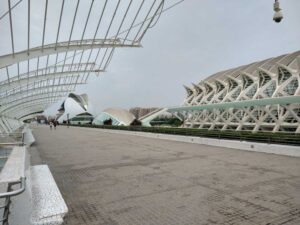
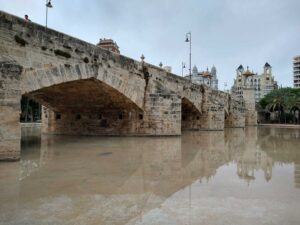
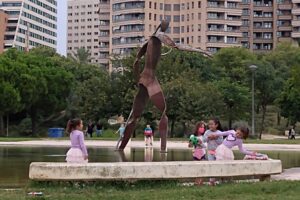 As this park flows along the course of the old river bed, it passes under bridges and offers places for children to play. People practice yoga here, jog, ride their bikes as well as other recreations. It is also popular for concerts, weddings and social gatherings. This is a great use for the old river bed and it appears to be the center for active lifestyles with people in motion everywhere.
As this park flows along the course of the old river bed, it passes under bridges and offers places for children to play. People practice yoga here, jog, ride their bikes as well as other recreations. It is also popular for concerts, weddings and social gatherings. This is a great use for the old river bed and it appears to be the center for active lifestyles with people in motion everywhere.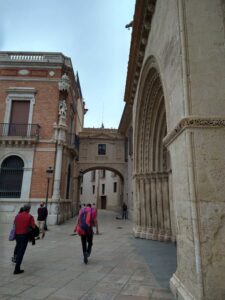 Valencia, like most European cities, has its older sections with wide plazas and narrow side streets. In the city center these areas seem dominated by restaurants and the usual assortment of stores from company owned brand name outlets to small mom and pop operations. McDonalds and Burger King always seem to have a prominent spot but I can not understand why. Of course there is the required large and elaborate fountain to serve as a focal point. These areas are almost always busy and pan handlers, buskers and the occasional pickpocket can be experienced here. Guard your purse or wallet while you enjoy the sights, the tapas and your choice of beer or wine.
Valencia, like most European cities, has its older sections with wide plazas and narrow side streets. In the city center these areas seem dominated by restaurants and the usual assortment of stores from company owned brand name outlets to small mom and pop operations. McDonalds and Burger King always seem to have a prominent spot but I can not understand why. Of course there is the required large and elaborate fountain to serve as a focal point. These areas are almost always busy and pan handlers, buskers and the occasional pickpocket can be experienced here. Guard your purse or wallet while you enjoy the sights, the tapas and your choice of beer or wine.
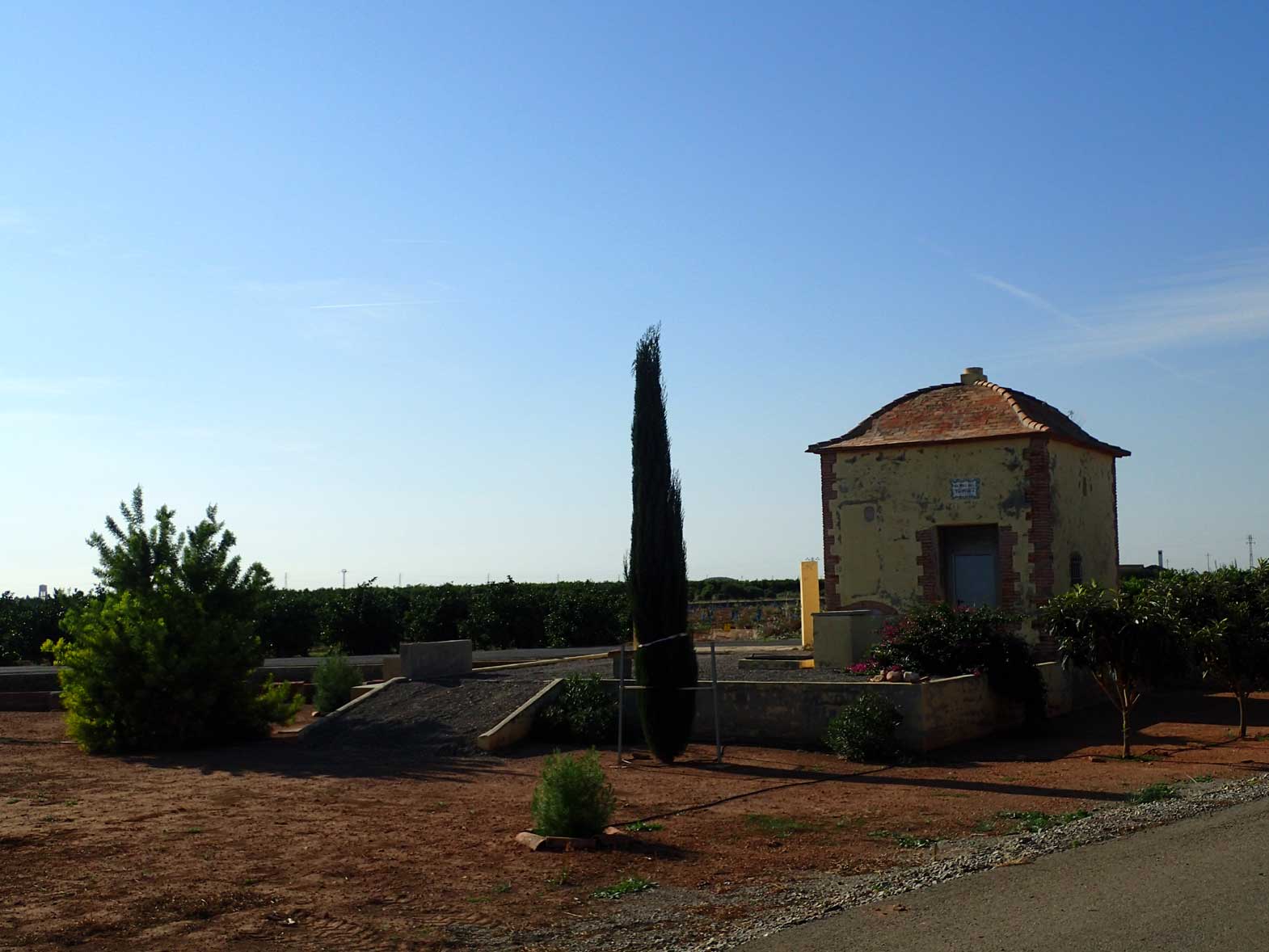
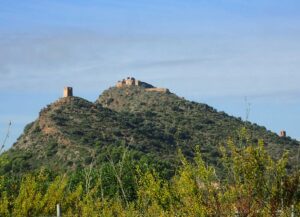

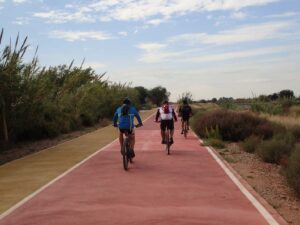 Our ride today was one of the shortest and easiest in recent memory: A mere 75 kilometers with hardly a climb worth mentioning. There were dedicated bicycle paths for much of the trip. After a day of rest in Valencia we will have six days straight of longer rides with a lot more ups and downs before we have another day off. By now all of us should be in great shape for the challenge. We shall see if I am as well.
Our ride today was one of the shortest and easiest in recent memory: A mere 75 kilometers with hardly a climb worth mentioning. There were dedicated bicycle paths for much of the trip. After a day of rest in Valencia we will have six days straight of longer rides with a lot more ups and downs before we have another day off. By now all of us should be in great shape for the challenge. We shall see if I am as well.
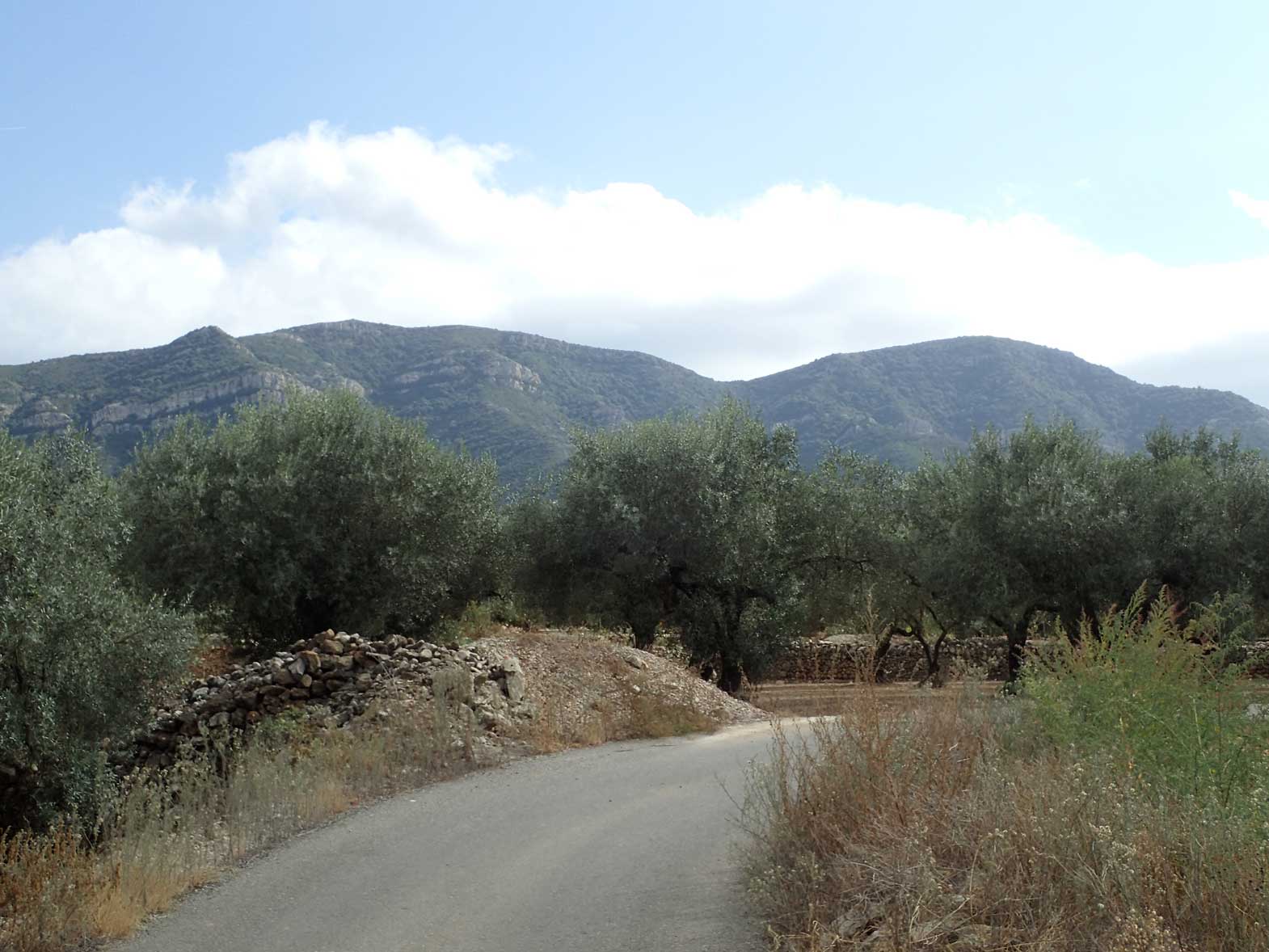
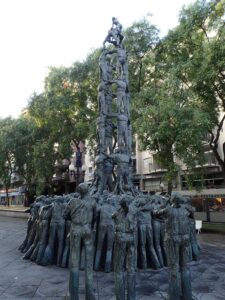
 coast for a bit and then up into the more rural farm lands of the countryside. It would be like this all the way to Valencia. On one of the coastal legs, I managed to glimpse a guy walking two Irish Setters, one about the size of my current male Rascal and the other a female about the size of my previous setter, Blaze. It was a homesick moment.
coast for a bit and then up into the more rural farm lands of the countryside. It would be like this all the way to Valencia. On one of the coastal legs, I managed to glimpse a guy walking two Irish Setters, one about the size of my current male Rascal and the other a female about the size of my previous setter, Blaze. It was a homesick moment.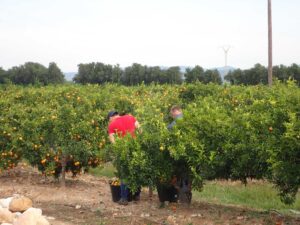

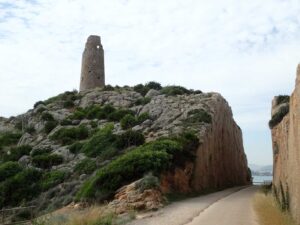 was similar and we still alternated between coast and farmlands as we followed the route of Spain’s high speed rail line between the mountains and the coast. Our route followed some old farming roads when it left the coast and we entered some rural villages where farm operations seemed to predominate. As we approached one over this rough, rural road the spires of a large cathedral appeared as if on a hill as we rounded a bend. It reminded me of something and for a moment I thought I saw skywriting spelling out, “Surrender Dorothy.” As it turned out, it was just a large church in a small town and even though I was not in Kansas, I was also not in OZ.
was similar and we still alternated between coast and farmlands as we followed the route of Spain’s high speed rail line between the mountains and the coast. Our route followed some old farming roads when it left the coast and we entered some rural villages where farm operations seemed to predominate. As we approached one over this rough, rural road the spires of a large cathedral appeared as if on a hill as we rounded a bend. It reminded me of something and for a moment I thought I saw skywriting spelling out, “Surrender Dorothy.” As it turned out, it was just a large church in a small town and even though I was not in Kansas, I was also not in OZ.
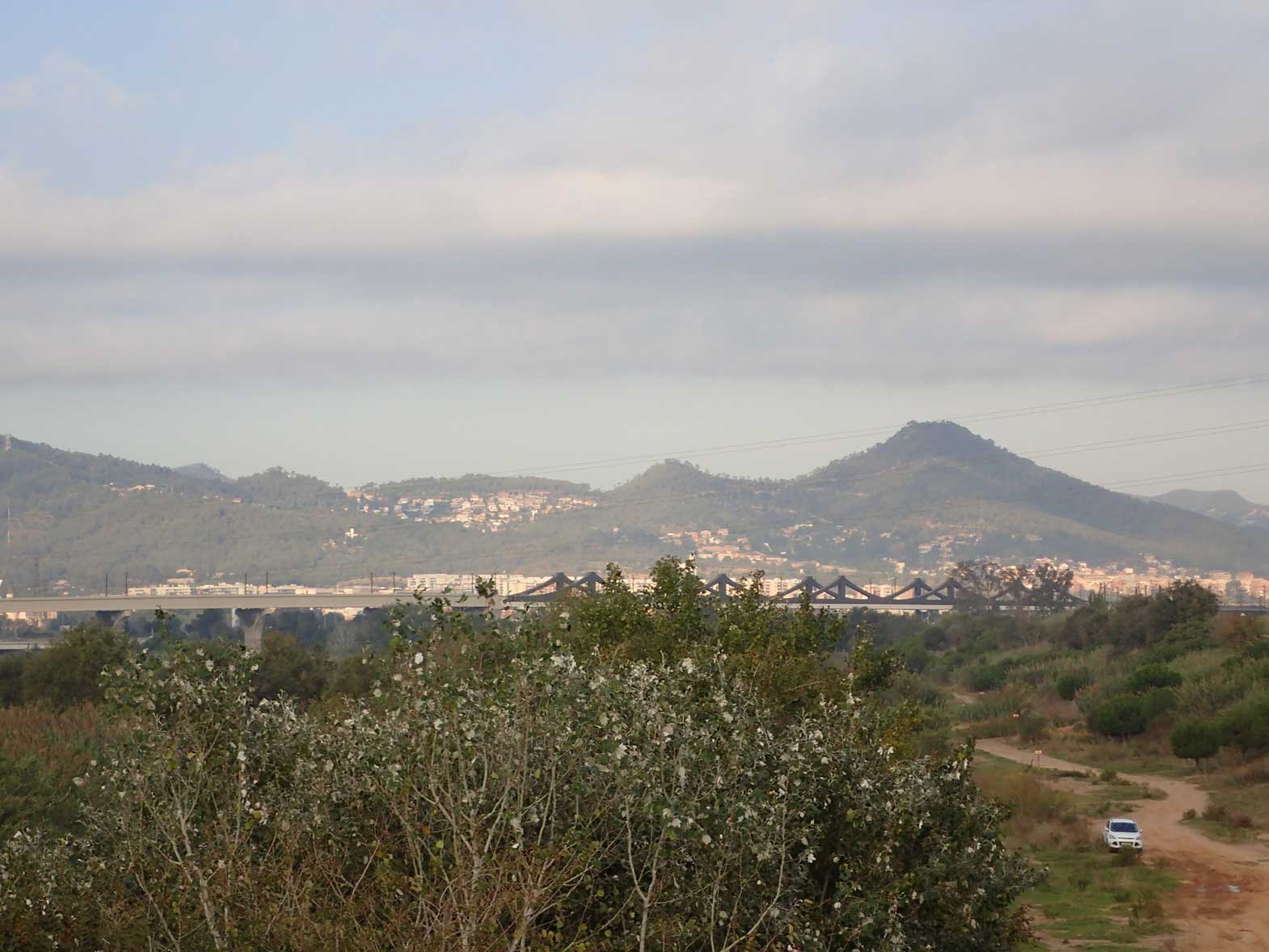

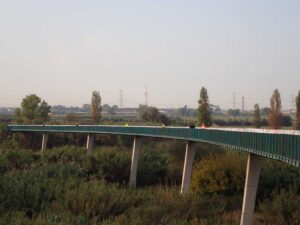 These bikeways and other structures such as the long, curving bridge in the photograph, allow muscle powered transportation to commute safely without encumbering motorists. Infrastructure built with all users in mind tends to solve a lot of problems.
These bikeways and other structures such as the long, curving bridge in the photograph, allow muscle powered transportation to commute safely without encumbering motorists. Infrastructure built with all users in mind tends to solve a lot of problems.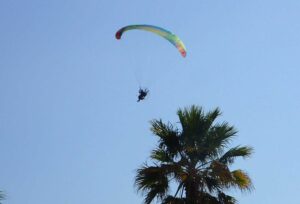
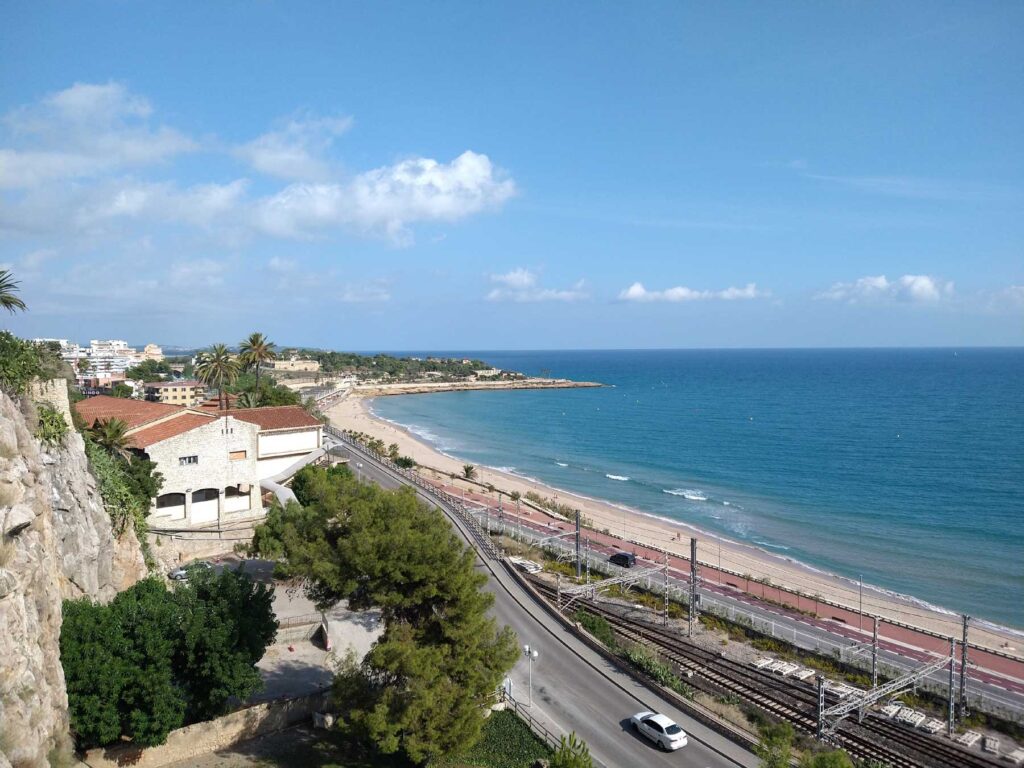
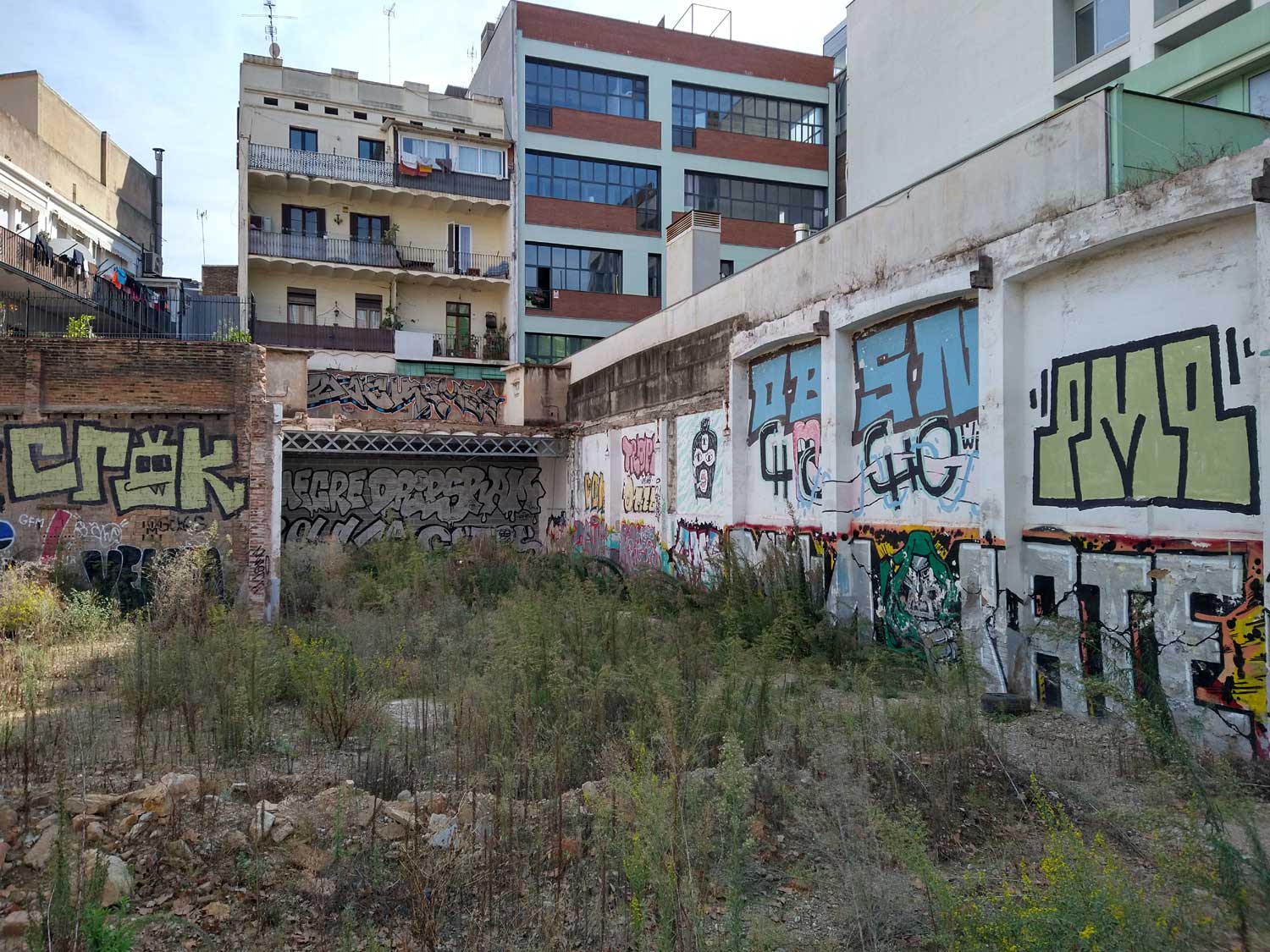
 As I have been riding across Europe it seems that nearly every large town or city has been infected with a plague of graffiti. Maybe coming fresh from the Picasso Museum made me hyper-sensitive to bad art but I felt the need to write a few words on the subject. Cities in the USA and Canada have similar infections but it just seems to hit me harder to see buildings that are ancient by my standards defaced with some of the nastiest stuff to ever leave the nozzle of a spray can. I understand that some consider it an art form but given the quality of some of the work, it is clear that the artists need a hell of lot more practice before exposing their incompetence to the public. Even impromptu art that has a degree of artistic merit gets covered in crude tags that destroy whatever the original artist intended. At times I would like to see the vandal skinned with a dull potato peeler.
As I have been riding across Europe it seems that nearly every large town or city has been infected with a plague of graffiti. Maybe coming fresh from the Picasso Museum made me hyper-sensitive to bad art but I felt the need to write a few words on the subject. Cities in the USA and Canada have similar infections but it just seems to hit me harder to see buildings that are ancient by my standards defaced with some of the nastiest stuff to ever leave the nozzle of a spray can. I understand that some consider it an art form but given the quality of some of the work, it is clear that the artists need a hell of lot more practice before exposing their incompetence to the public. Even impromptu art that has a degree of artistic merit gets covered in crude tags that destroy whatever the original artist intended. At times I would like to see the vandal skinned with a dull potato peeler.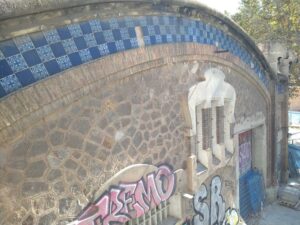
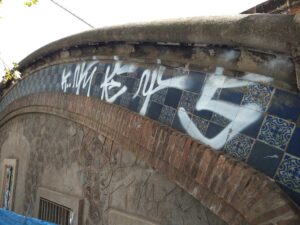 Some cities are worse that others but every city, even Venice has some. Barcelona seems especially bad with spray bombers willing to paint nearly anything that stands still for long enough, even the trains.
Some cities are worse that others but every city, even Venice has some. Barcelona seems especially bad with spray bombers willing to paint nearly anything that stands still for long enough, even the trains.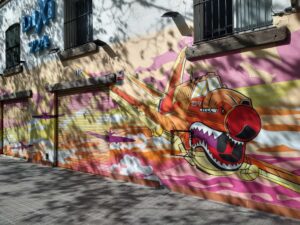
 This is not to say that every form of graffiti is bad. Temporary construction barriers and boarded up windows are fair game but maybe the street artists could get together and jury the installations. You could start by just painting your bedroom wall until judged good enough to try the front door of where you live. From there you may be allowed to progress to boarded up windows and finally to construction barriers. Your crowning glory could be to be given a commission to do an actual wall mural.
This is not to say that every form of graffiti is bad. Temporary construction barriers and boarded up windows are fair game but maybe the street artists could get together and jury the installations. You could start by just painting your bedroom wall until judged good enough to try the front door of where you live. From there you may be allowed to progress to boarded up windows and finally to construction barriers. Your crowning glory could be to be given a commission to do an actual wall mural.